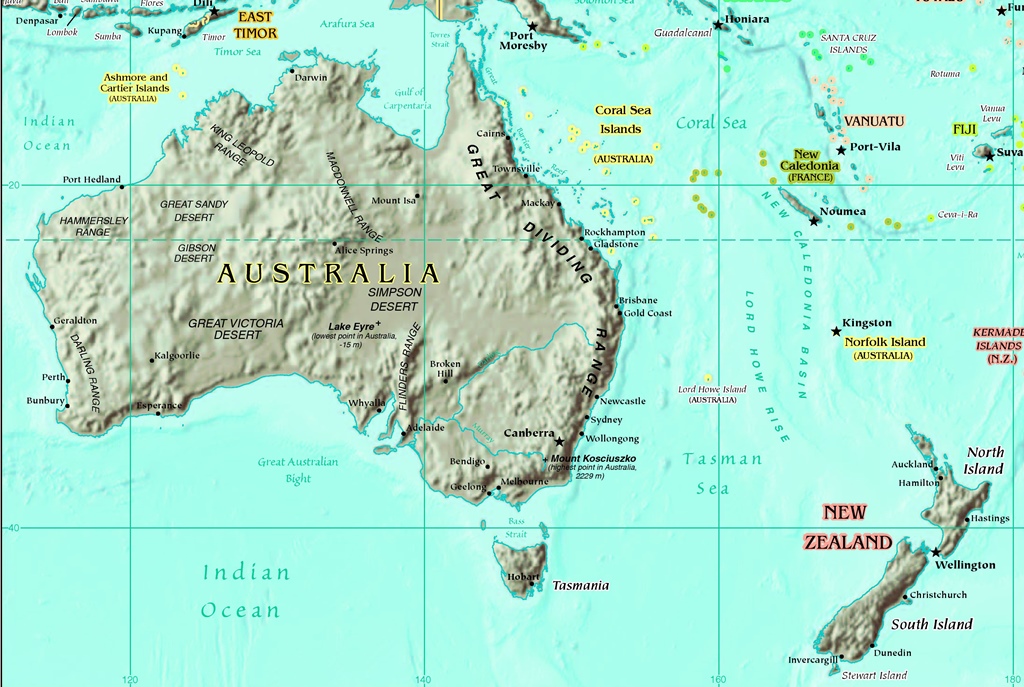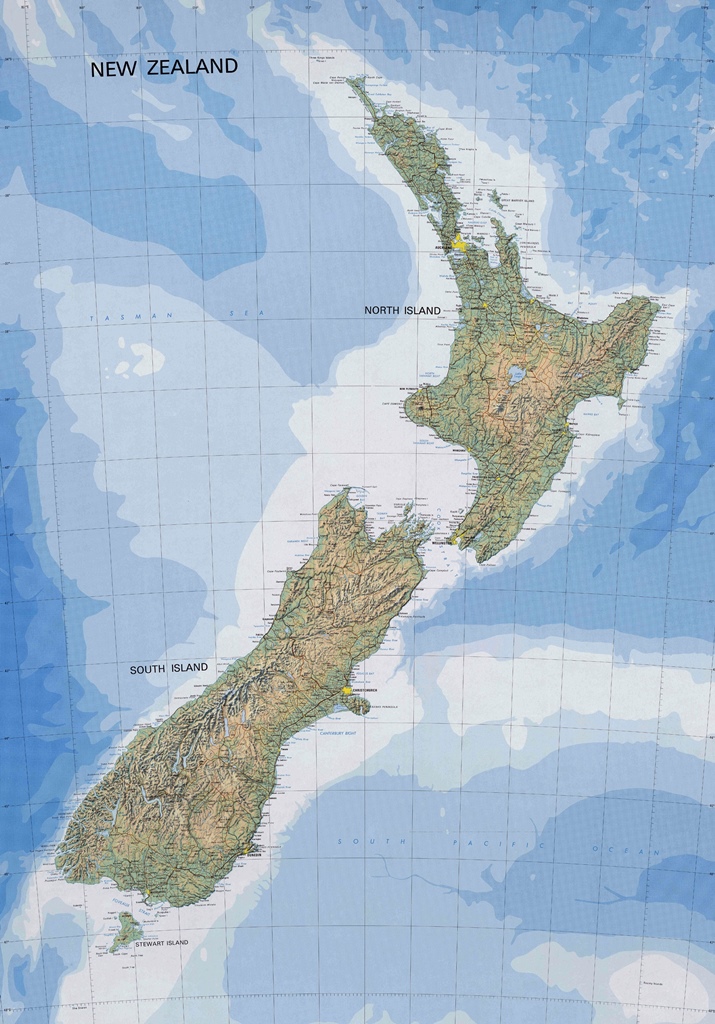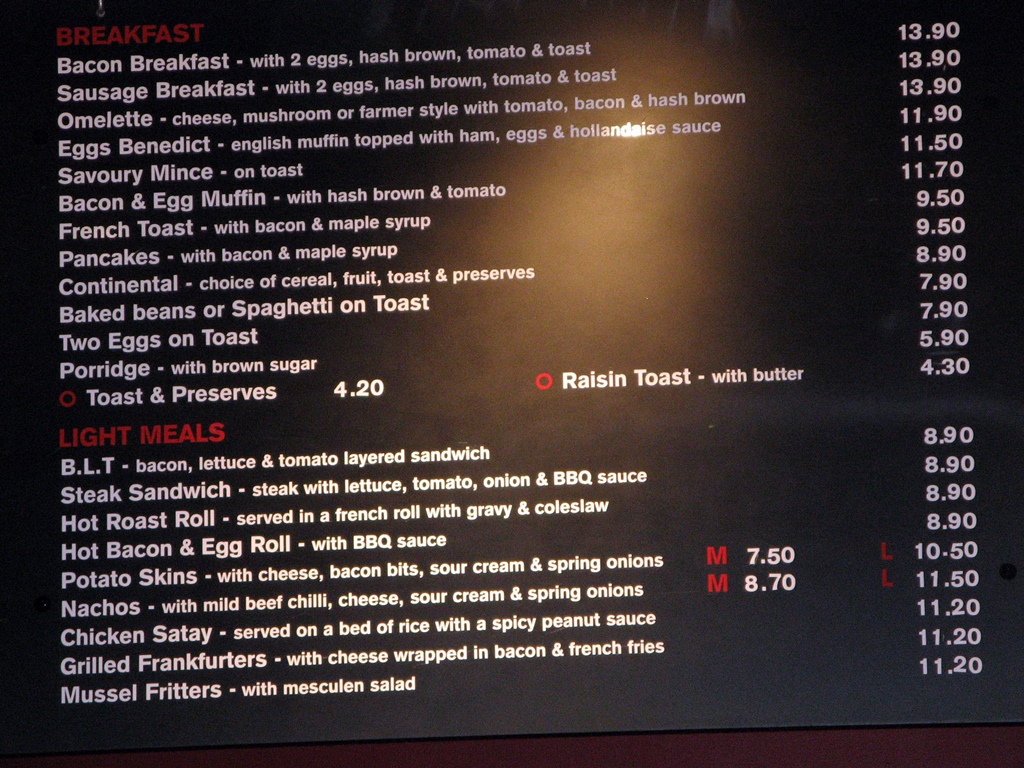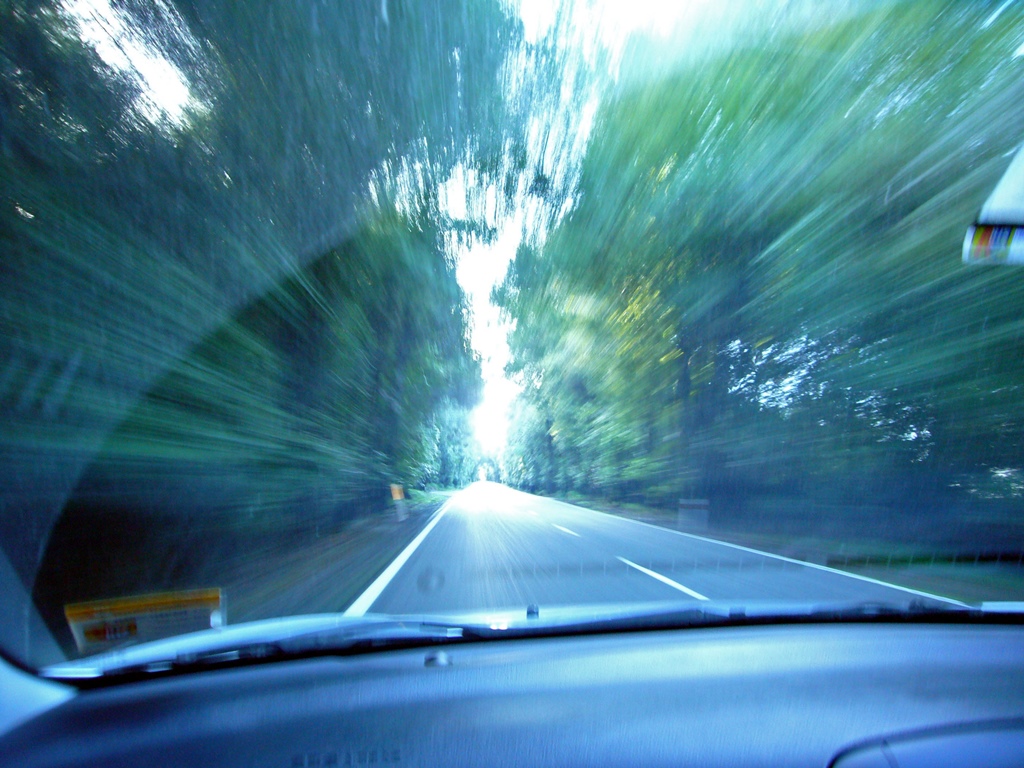Australia and New Zealand
Early in 2008 we saw some advertisements from QANTAS that offered a round-trip airfare from
Los Angeles to Sydney for $1099, with up to three flights within Australia included in the
deal. This sounded very attractive to us. On closer scrutiny, we found date (Not July) and
area (southeast Australia only) restrictions, but the deal still included places like Sydney,
Brisbane and Melbourne, and even the large island of Tasmania to the south of the mainland,
so it still seemed pretty good.
But then we thought about our schedule, which would allow for two weeks or maybe a little
more, and felt we would be spending too much of it in airports if we went with this deal.
Also, we’d visited and enjoyed New Zealand in 2004 and thought it would be fun to drop in on
the Kiwis again if we were going to be in that part of the world. So Nella got on the
Internet and started poking around for alternatives. What she eventually found was a deal
from American Airlines that would take us from L.A. to Auckland, from Auckland to Brisbane,
and from Sydney back to L.A. for roughly the same price as the QANTAS deal. There was an
obvious missing link here, as Brisbane and Sydney are separated by 400 miles or so, but
Nella found Virgin Blue, a domestic airline that would bridge this gap fairly cheaply. One
other thing we discovered was that the international flights were actually operated by QANTAS,
meaning we wouldn’t be dealing with American at all, except to make and pay for the
reservations. This was an important thing to take note of, as it completely changed the ticket
counter (and even the terminal building) which we would be using for check-in. We polled our
kids on the trip and got a thumbs-up from Connie but a thumbs-down from Philip (employment
commitments), so we decided to go for it with a party of three.
Having made this commitment, we did some research and pieced together a tentative itinerary of
things to see and do. Armed with this information, Nella began searching the Internet for
places to stay, a process that was to take several weeks (finding the right combination of
location, quality of accommodations and cost can be a painstaking operation). Accumulated
credit card points were helpful, being good for discounts at certain hotels. Car rental would
also be required, with cars to be picked up in Auckland and in Brisbane (public transport/foot
power to be used in Sydney), and this was also set up on-line.
In the meantime, I looked into some of the technicalities. Everyone's passports were checked
to make sure they were up to date. Australia was found to require visas for entry, which could
be purchased in advance on-line.
New Zealand at one time charged a departure fee (arrival in the country was free, but it cost you
money to leave), but this had apparently been discontinued. Both countries’ languages were
examined and found to be a form of English, so no crash courses were required. Each country
has its own currency, each called dollars and cents - at the start of the trip, the New
Zealand dollar was worth about 76 American cents, and the Australian dollar about 97 cents. We
decided not to procure any of this currency in the U.S., as this gets you a horrible exchange
rate, but instead decided to find ATMs as soon as we landed at the Auckland and Brisbane
airports (airport exchange rates aren't always the best, but they're much better than what
you'll find in the U.S.). Since baggage allowances can vary from airline to airline, we
consulted the QANTAS and Virgin Blue web sites, and found the Virgin Blue allowance to be much
lower than the international QANTAS allowance. We resolved to pack in anticipation of the
Virgin Blue allowance, to avoid the scourge of excess baggage fees.
As the trip grew closer, a few final details were attended to. Being security-minded, credit
and ATM card companies will often stop honoring their cards if they find them to be used
somewhere radically removed from the home address of their owners. As we were planning on
performing virtually all of our transactions with aid of plastic, we made sure to inform
these companies of our itinerary. We also made sure we had international phone numbers for
these companies, in case of loss or in case someone disabled the cards mistakenly. One other
thing we checked while talking to these companies was the size of their "conversion fees". A
conversion fee is what a company charges for converting foreign-currency transactions to
dollars. Most credit card companies charge 2-3% for each transaction, which can add up.
Finally, cameras were checked and found to be functional (lucky you). Packing checklists
which had been compiled under non-last-minute circumstances were used carefully when
assembling our luggage. Transportation to and from LAX was arranged with Philip, and on a
warm August afternoon we were duly delivered to the Tom Bradley terminal.
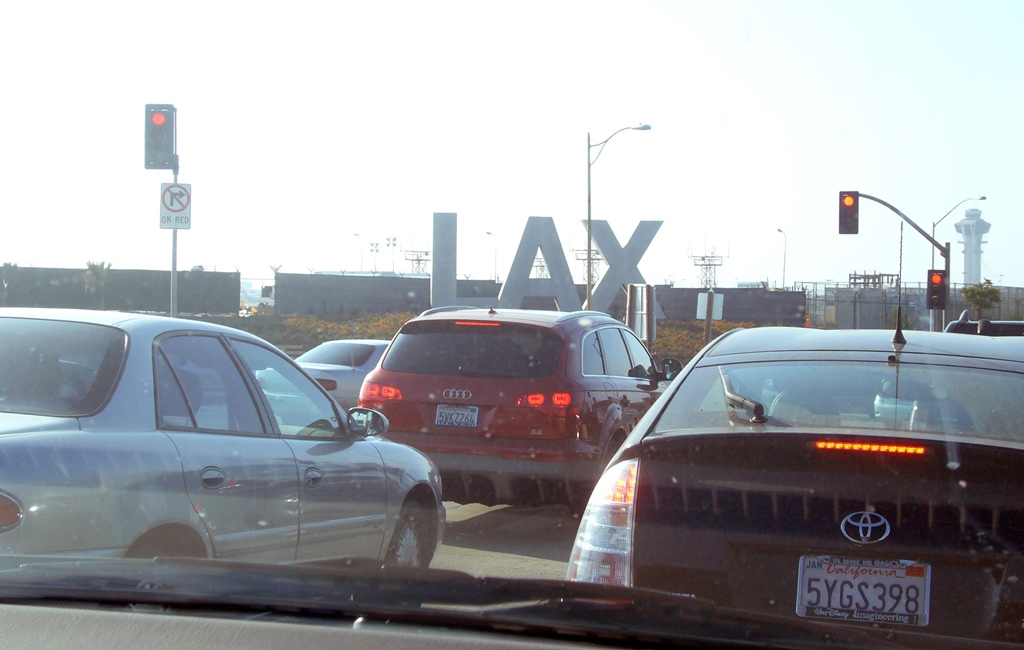
Traffic Approaching LAX
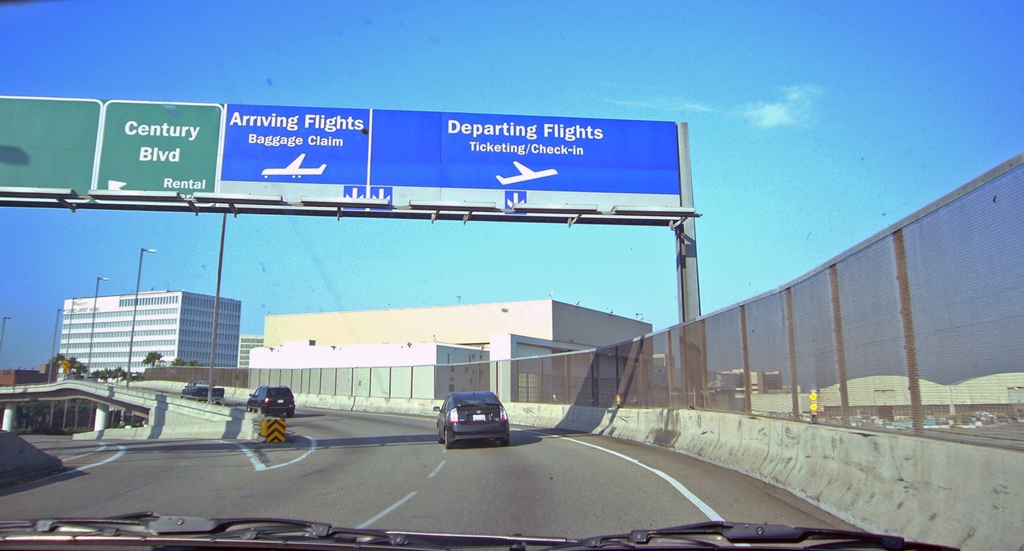
Arrival/Departure Signs
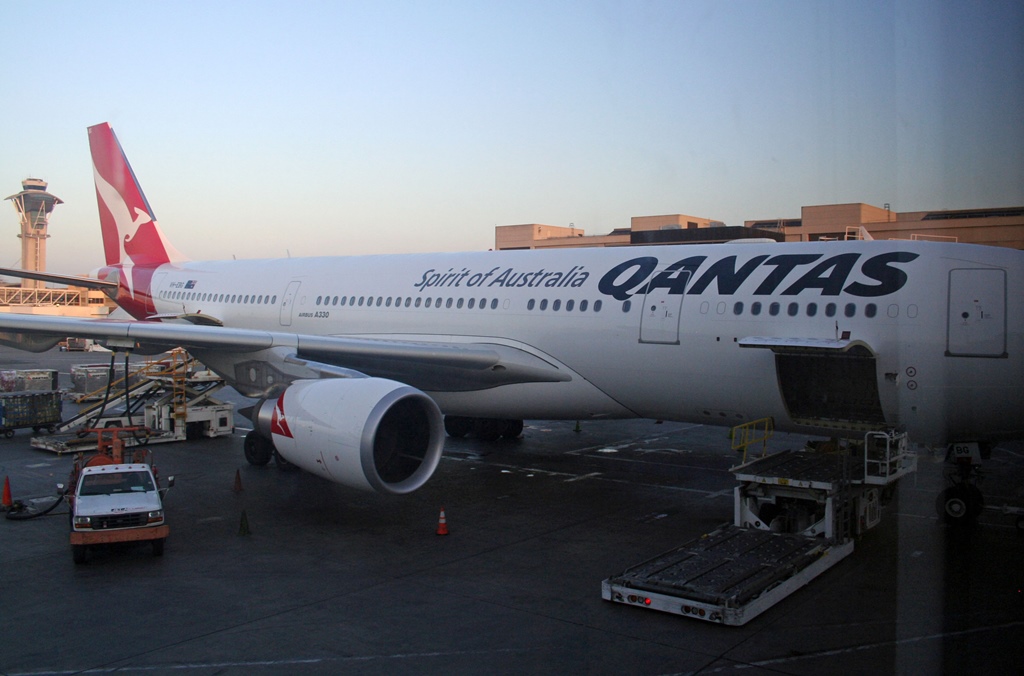
QANTAS Airbus A330
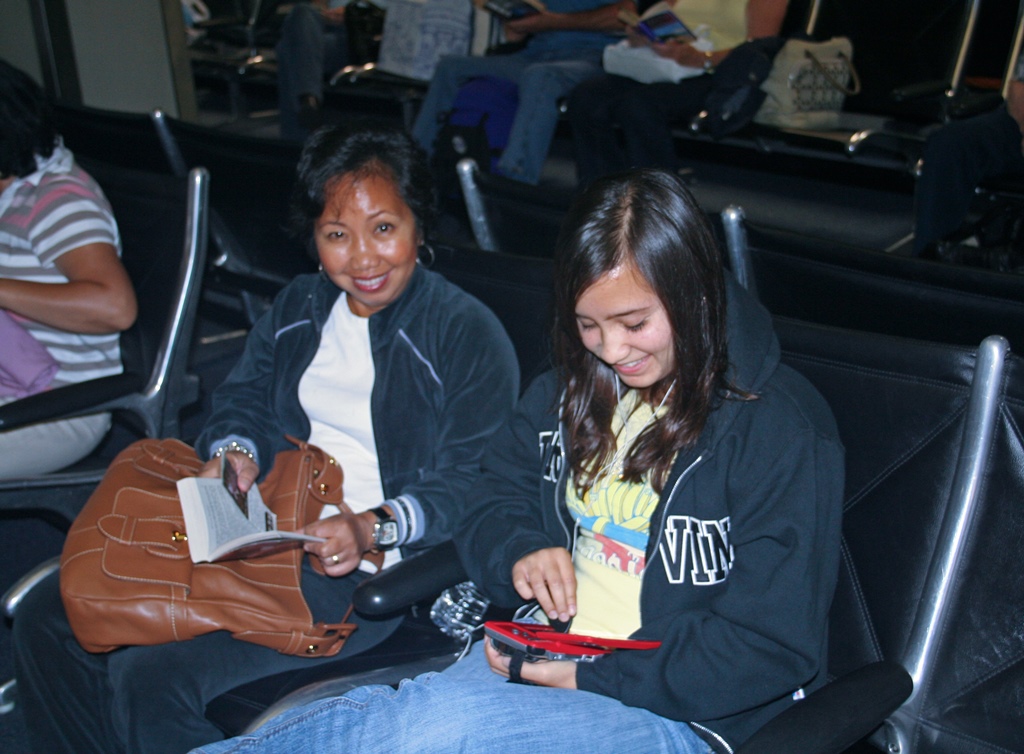
Nella and Connie Waiting at Airport
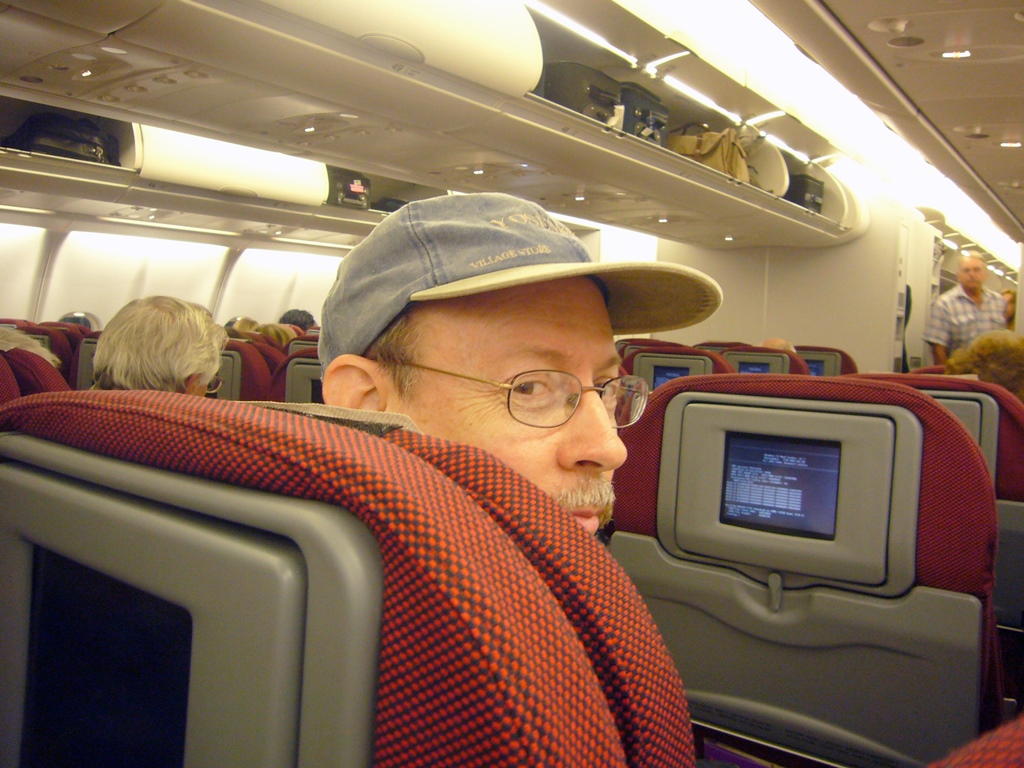
Bob on Airplane
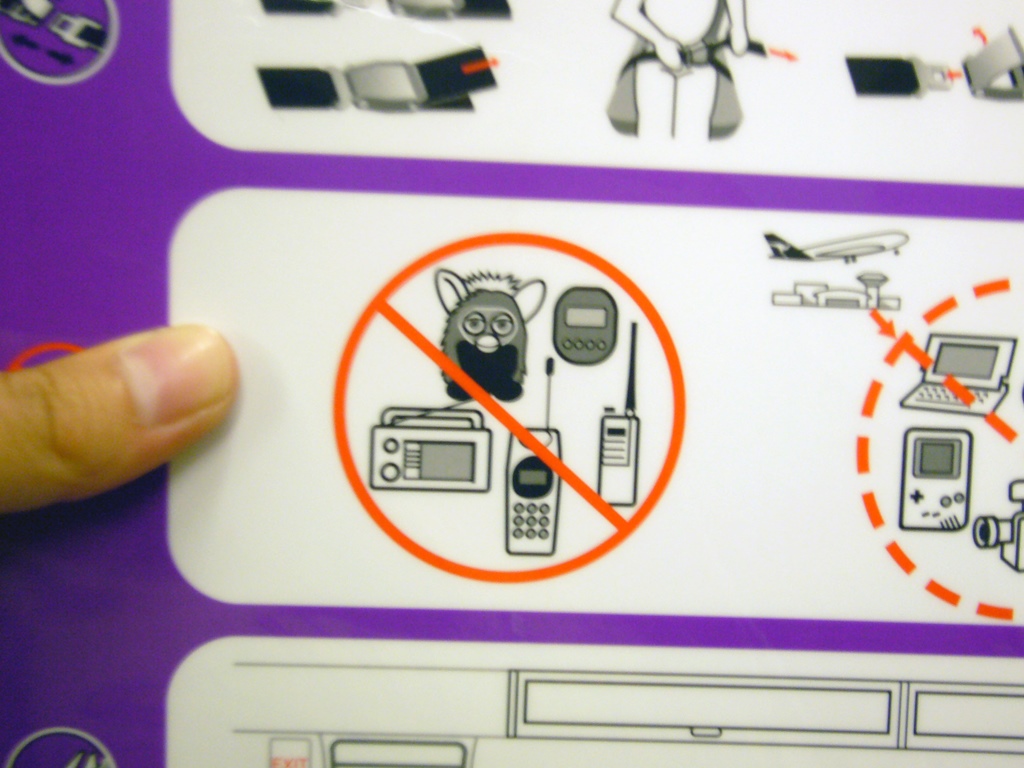
Turn Off Your Furby
So why New Zealand? If you’ve seen the Lord of the Rings movies, you might have an inkling.
Those expecting to find hobbits will be disappointed, but the scenery is unique, diverse and
often spectacular. Maori culture infuses the place, and leads among other things to many
place names that are difficult to pronounce. The culture itself is fascinating, and is being
kept alive by many Maori practitioners. Driving around the countryside, one is struck by how
green everything is, at least in the winter (which August is in the middle of), and various
forms of agriculture (especially sheep farming) are seen everywhere. And everyone speaks
English.
New Zealand
A little background: New Zealand consists primarily of two large islands, unimaginatively named
North Island and South Island. It is considered to be part of Polynesia, and was first populated
several centuries ago by Polynesians who canoed there from Polynesian parts unknown and are
called Maoris. The first European to visit New Zealand was the Dutch explorer Abel Tasman, who
arrived at the west coast in 1642. After Maoris began killing his crewmen, he elected to depart.
New Zealand was not revisited by Europeans for more than a century. During this time, New
Zealand was thought to be a west-facing coastline of a great southern continent which was felt
to extend as far east as the tip of South America. This idea was dispelled by the next European
explorer to reach the area, James Cook, who arrived in his ship Endeavour and mapped the
islands in some detail in 1769. Many of the non-Maori place names in New Zealand were established
by Cook. Cook’s encounters with the Maori people were for the most part more successful than
Tasman’s, and shortly after Cook’s voyage, Europeans began trading with the Maoris. Missionaries
and others began settling New Zealand in the early 19th Century; there were a number of disputes
with the indigenous population (including Land Wars in the 1860’s and 1870’s) which were settled,
but not always to the complete satisfaction of the Maoris, many of whom remain less than
delighted to the present day. New Zealand is now a constitutional monarchy (Elizabeth II is the
Queen) with a parliamentary democracy, and its capital is Wellington (named for the British
victor at Waterloo), located at the south end of North Island. Its largest city is Auckland (in
the northern part of North Island, named for the Earl of Auckland), which claims about 1.3
million of New Zealand’s 4.3 million residents. Despite the country’s smallish population, New
Zealand fields a world class rugby team, the All Blacks (named for their uniforms), and many New
Zealanders (including especially the Maoris) are fanatical about the game.
Another interesting fact about New Zealand is that it’s very far from Los Angeles - our flight
over that distance lasted 13 hours. As the flight actually travels a little farther south than
it does west, in addition to jet lag, a traveler has to deal with "climate lag". The middle of
summer in Los Angeles is the middle of winter in New Zealand, and our arrival in Auckland at 5
AM the morning of August 5 was dark, rainy and cold (probably the mid-40’s F.). We got through
Immigration, baggage claim and Customs without incident (apparently kia ora means "welcome"
in Maori), and were able to find an ATM and our rental car (a Hyundai from Avis) without
difficulty.
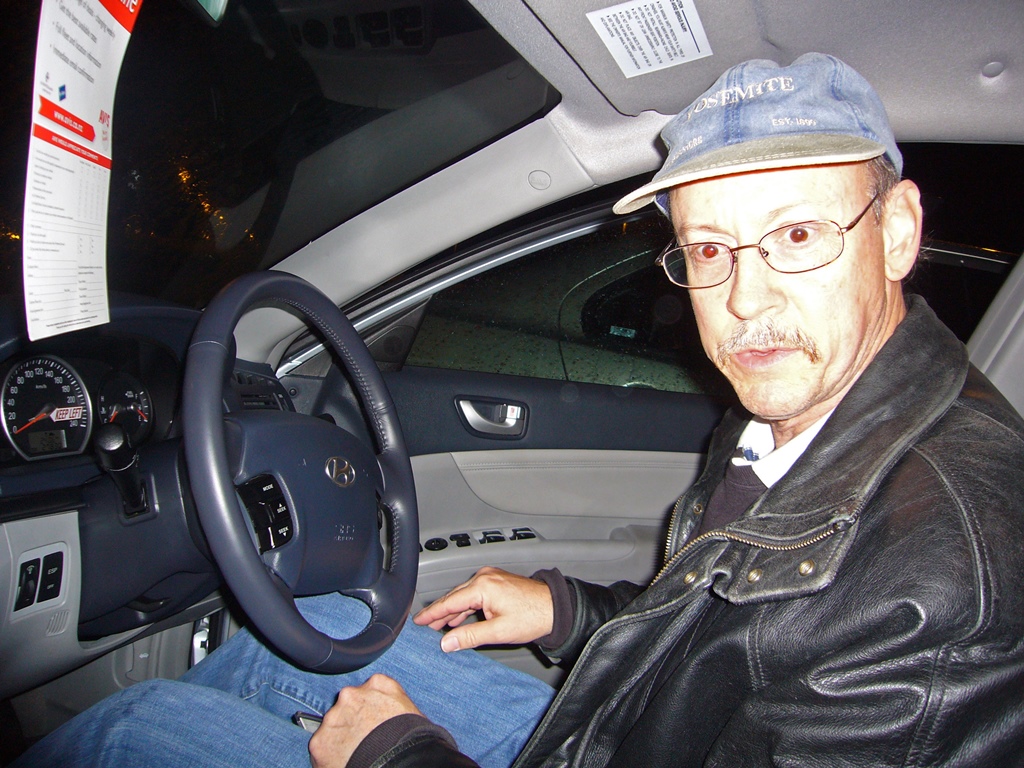
Bob and Right-Side Steering Wheel
It quickly becomes obvious to even the most unobservant driver that in New Zealand, steering
wheels are on the right of the car and driving is on the left of the road, but just to make sure,
Avis affixes "Keep Left" stickers to their speedometers. It actually isn’t that difficult to get
it mostly right, but it adds a certain amount of tension to the driving experience if one isn’t
used to it. The trickiest things are the turns, when you have to remember to turn into the
correct lane (i.e. the one on the left). It also takes some practice to stop getting into the
car on the left side and being surprised by the absence of a steering wheel. Distances and speed
limits are metric, but this isn’t difficult to get used to either – you just have to remember
that kilometers elapse somewhat faster than miles (about 1.6 times faster), and that if the
round speed limit signs say 80 but the number on your speedometer says 100, you’re going too
fast. With all this in mind, we left the airport and headed in the general direction of our
first destination, the town of Rotorua.
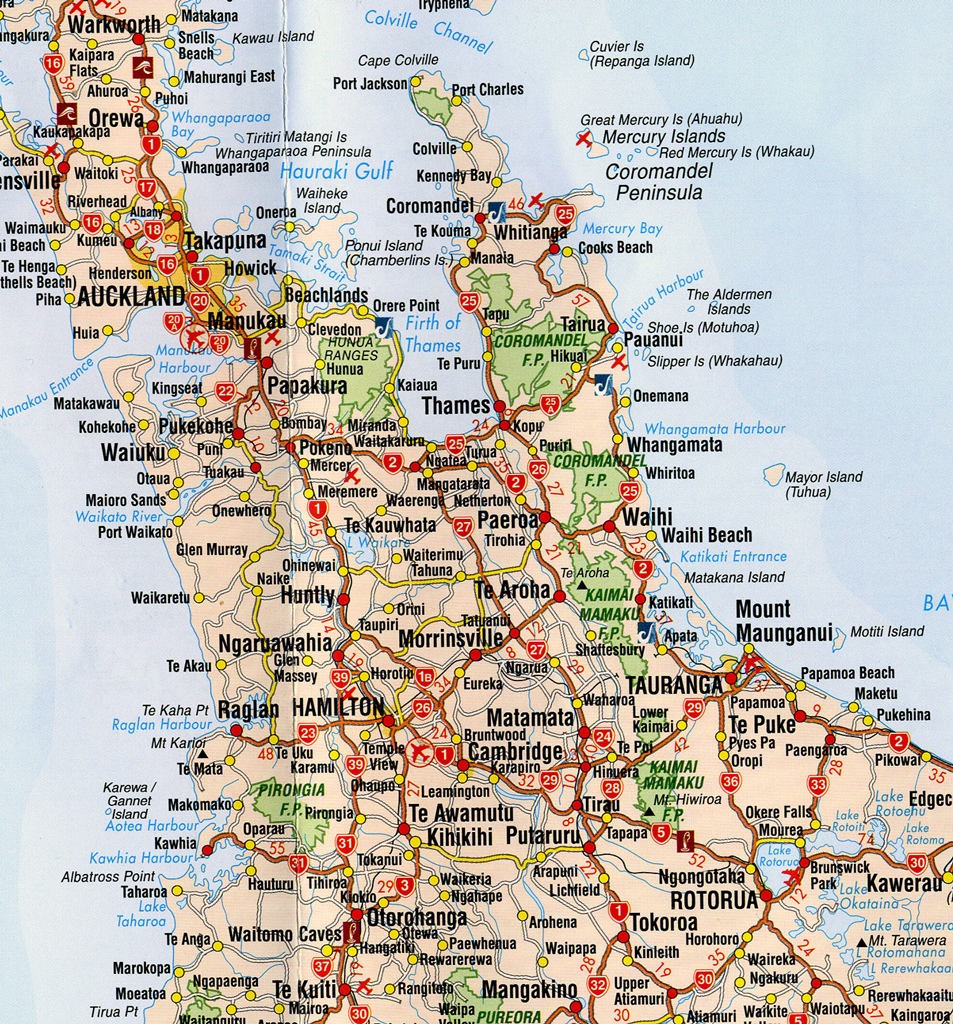
Road Map - Northern North Island
Rotorua is a center of Maori culture and thermal activity, and they also have this big lake.
More on this later. En route we stopped for breakfast at a rest stop and found a place across
from the gas station called the Autobahn Café. The time was shortly before 7 AM, but it was
still dark outside (it being winter), and the place was mostly empty. The menu was surprisingly
varied, with such items as mussel fritters, chicken satay, venison and ostrich burgers, Wiener
schnitzel and Cajun spiced chicken thighs. But the item that surprised and delighted Connie was
canned spaghetti on white toast, which forthwith became her breakfast.
Menu, Autobahn Café
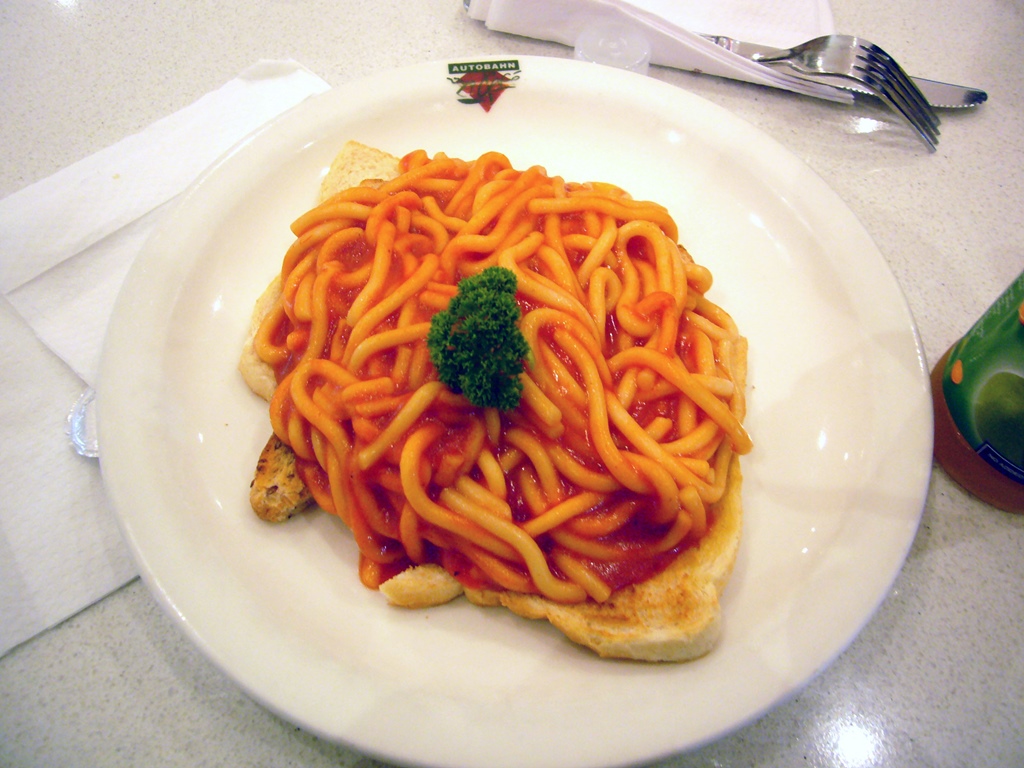
Connie's Spaghetti on Toast
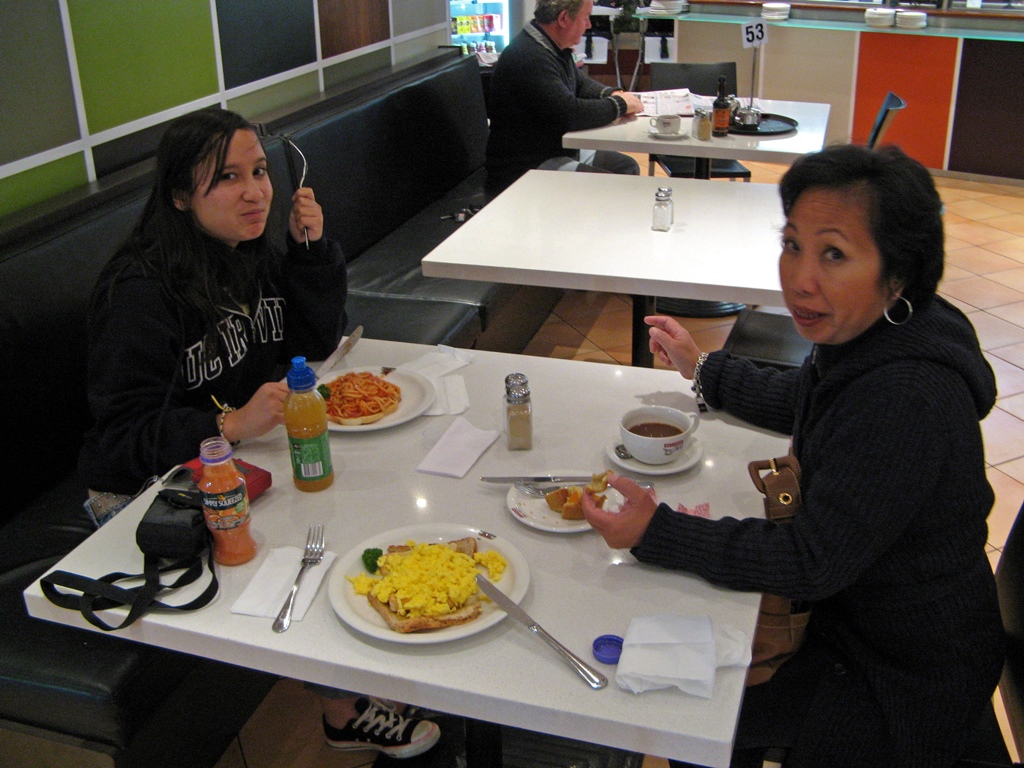
Connie and Nella at Breakfast
Rotorua is the better part of 200 miles to the southeast of Auckland, and on the way we
had ample views of the aforementioned sheep and startlingly green landscape. And we found
ourselves making good time, such good time that it would have been much too early to
check into our hotel on arrival. On the other hand, it seemed that we might be able to
make the daily 10:15 eruption of the Lady Knox Geyser at Wai-O-Tapu Thermal Wonderland to
the south of Rotorua. I depressed the accelerator pedal a little bit harder.
Driving in New Zealand

